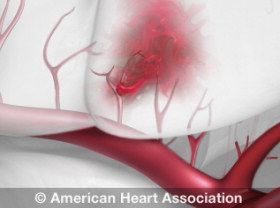A stroke can happen to anyone at any age. According to the American Stroke Association, someone in the United Sates has a stroke every 40 seconds.
So how do strokes strike? Strokes occur when there is bleeding in the brain or when there is a blockage resulting in blood and oxygen not flowing to the brain. A stroke limits the oxygen supply to the brain and can lead to serious brain damage.
Every minute a stroke goes untreated, a person loses about 1.9 million neurons, which can affect speech, memory, movement and so much more. Learn to spot a stroke fast by knowing the signs to look out for. The warning signs include:
Signs of Stroke
– Numbness or weakness of face, arm or leg, especially in one side of the body
– Sudden severe head pain
– Difficulty speaking or understanding language
– Unexplained dizziness, loss of balance
– Loss of vision or difficulty seeing in one or both eyes
Stroke Risk Factors
– High blood pressure
– Obesity
– Diet
– Lack of physical activity
– Diabetes
– Smoking
Three major types of stroke:
Ischemic Stroke
An ischemic stroke, also referred to as a clot, occurs when there is a blockage in the blood vessel as it supplies blood to the brain. This build-up is the result of fatty deposits lining the walls of the vessel. Fatty deposits can cause two types of blockage:
Cerebral thrombosis: a blood clot in the vessel
Cerebral embolism: a blood clot in another part of the circulatory system such as the heart or large arteries in the neck or chest. A piece of the clot detaches and enters blood stream until it reaches small vessels that won’t allow it to pass.
85% percent of stroke cases are caused by ischemic stroke.


